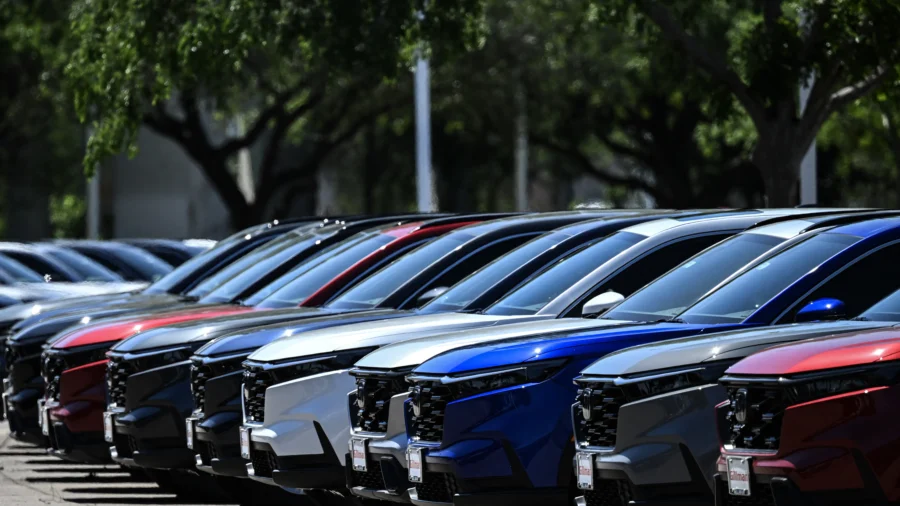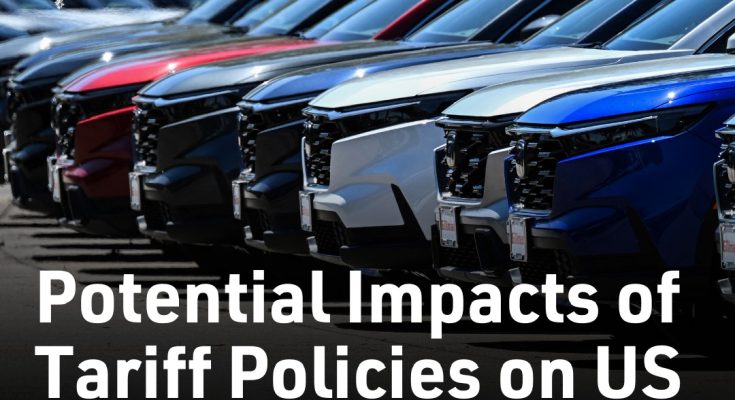One particular area of pricing concern is the U.S. new vehicle market. Wedbush analyst Dan Ives estimates price hikes attached to new U.S. tariff rates will be substantial.
“Over the last week, we have spoken to many in the auto industry from around the U.S., Europe, and Asia, and the conclusion is this tariff announcement (in its current form) would send the auto industry into upside-down mode and raise the average price of cars between $5,000 on the low end and $10,000 to $15,000 on the high end,” wrote Dan Ives, managing director at Wedbush Securities, in a recent research note.
Key is that the analysis is based on the tariffs as they’re known right now. Countries are rushing to negotiate and anything could change.
But given the current situation, couple that with our high-interest rate environment, lower inventories, and the average new per-vehicle price of $48,541, and consumers will have to dig deep to land a new car in 2025.
Here are three more key takeaways from the tariff saga and the potential impact on new vehicle sales.
1. Expanded Tariff Activity Fueling Pricing Concerns
Auto industry analysts anticipated the auto tariffs to be lower than the rates released by the White House in the first week of April, but Team Trump surprised the auto market with higher rates.
“We had expected the postponed 25 percent tariffs on Canada and Mexico and some reciprocal tariffs to go into effect on April 3, the day after what the president has called Liberation Day,” said Jonathan Smoke, chief economist at Cox Automotive. “That expectation was reflected in our downwardly revised sales forecast for the year. The announcement that all imported vehicles will see 25% tariffs will have a broader impact on the auto market.”

2. Tilting the Table Toward US Production
Smoke believes the tariffs will hang around longer than expected as the United States looks to gain some domestic leverage with vehicle manufacturing.
“President Trump indicated that the new tariff will be permanent, and as such, this move resembles the executive order by President Lyndon B. Johnson in 1964 on light trucks, which has remained in place for more than 60 years,” Smoke said. “This is no negotiation gambit–it’s an attempt to restructure the U.S. auto market favoring domestic production.”
3. Consumers Can Save by Acting Fast
Smoke said that consumers must act quickly to buy a new car, truck, or SUV at a more stable price point. “It’s not immediately clear when the tariff will be imposed on vehicles and inflating the cost of vehicles in inventory, but consumers likely have a narrow window to buy new or used vehicles before prices increase by 10 percent or more,” he stated.
Other industry experts advise hitting the dealer lots directly to cut a better deal.
“Look for cars already sitting at dealerships since these may not bear the full brunt of tariff-related price hikes yet,” said George Carrillo, co-founder and chief executive at the Hispanic Construction Council, by email to NTD. “For instance, a compact sedan that costs $23,000 now could cost $27,000 or more once new stock arrives.”
Additionally, this could be a perfect time to sell if you already own a car.
“New car prices often push people to shop for used cars, increasing their value,” Carrillo said.
For example, a late-model SUV may have been worth $18,000 last year, but with low inventories, that vehicle could quickly sell at $20,000. “You also need to ask yourself, will you need to replace that SUV? If you sell but plan to buy another car soon, you’ll still face those inflated prices,” Carrillo noted.
Using public transportation or renting for a while could be an option until prices settle down. “Timing is key here,” Carrillo added. “Selling now might make sense, but only if you’re not immediately jumping back into the high-priced car market.”



